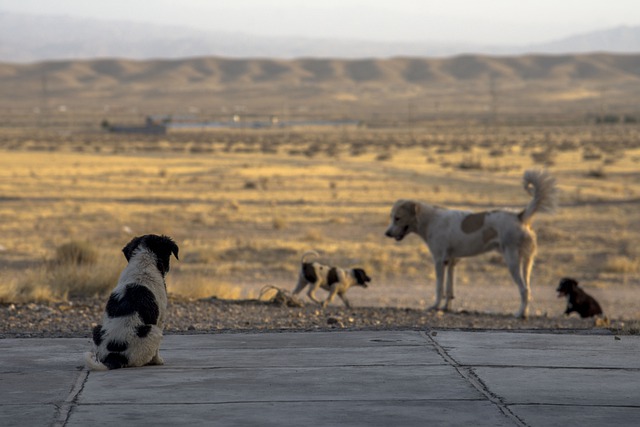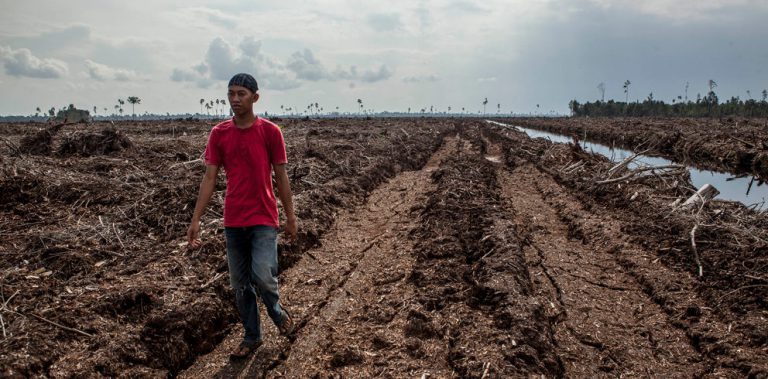This article was written by Johanna Lindahl, researcher at the Department of Clinical Sciences; Division of Reproduction, SLU. The findings and conclusions in this blog post are those of the author and do not necessarily represent the views of SLU.

Imagine that you have two children. Both children are bitten by a dog that seems to have rabies, but you cannot know and now the dog has been killed. If the dog really had rabies, then the children will get it. If the children get a vaccination in time, they will not die. But the hospital is far away, the vaccine costs money and you can only afford to do this for one child, and maybe you will not make it on time. That money you would need for food for the family, and the rest of the family will suffer if you travel with one child. Maybe the dog did not really have rabies. Maybe the child that you chose to save will anyway not make it in time. What shall you do?
Rabies is a disease with 100% case fatality, but it is also a fully vaccine-preventable disease. So why are people still dying?
Globally, canine rabies is still one of the zoonotic diseases (diseases spreading to humans from animals) responsible for most human deaths (1). The vast majority of the 59 000 human deaths worldwide (2) are the result of bites from rabid dogs, with most deaths occurring in Asia (3–5). Children are most affected, probably because they are more easily bitten by dogs. In many countries, the number of cases is probably underestimated since there is no official rabies monitoring system. Since dogs are the main reservoir and source of infection for humans, vaccination of dogs is recognised as the most cost-effective and permanent solution to rabies prevention (6,7).
Numerous recent programmes have facilitated rabies control in low-resource settings, however these costly programmes have not yet achieved sufficient and sustainable vaccination coverage of 70%, which is required to eliminate canine rabies (8–10). Expansion of rabies elimination programmes in low-resource countries has been constrained by many factors:
- It is difficult to buy and transport the vaccines for injections, since they have to be kept cold all the time. Many countries have difficulties maintaining a cold chain, or reaching remote populations with vehicles.
- Many dogs are free roaming or aggressive and therefore difficult to catch and vaccinate.
- The dogs are often not living for very long, and therefore it is necessary to vaccinate all dogs in an area regularly to make sure that at least 70% of them are protected.
- Even when vaccinated, some dogs are in too poor condition for them to create enough antibodies to be protected. This can be because of malnutrition, or because of other infections, for example with parasites.
Even though vaccination of dogs is relatively expensive, the costs of human post-exposure vaccination, meaning vaccination that occurs after a person is bitten but before disease has started, is even larger. If given in good time, post-exposure vaccination will stop the disease from developing, but in many countries, there are not so many places where the vaccines are administered, and the victim has to pay for it themselves. As an example, in Cambodia people bitten by dogs can get the vaccine for free, but there are only three places in the whole country that provides this. Thus, most people that are potentially exposed to this horrible disease never gets vaccinated and may die undiagnosed in their home. Once a person develops the disease, there is nothing a hospital can do except to try to ease the symptoms. In many low and middle-income countries there is no provision for this, and the victim would be sent home to die.
Even if the reality is grim in many parts of the world, dog-transmitted rabies could be eradicated if enough dogs would be vaccinated, either by injections or by vaccine-baited food. So why has it not happened? The answer to this may lay in the lack of collaboration between human and veterinary sectors. This can be illustrated in this example from Europe: A person is bitten by a cat, imported from another country and not vaccinated. The veterinary authority agrees that it may be rabies, and the cat has to be autopsied to make the diagnosis. However, they judge it not urgent enough to pay for express transport and do the autopsy the same day, instead the animal will be autopsied the next Monday, after the weekend. However, the health sector, who has gotten the bitten patient, judge that they cannot take the chance, and initiate the post-exposure treatment, which not only has a high cost, but also some suffering for the patient. The savings done by the veterinary authority was minimal compared to the costs incurred by the hospital, resulting in higher costs for the government, which in the end funds both.
Vaccination costs for eradication of rabies in the dog population would be carried by the veterinary sector, and the savings would benefit the human health sector. This points to the need of a One Health approach with increasing collaboration between both sectors, for improved health for all. We can stop rabies, but we need to think outside our siloes and boxes and work together.
In our new project “Man’s best friend: A crossborder transdisciplinary One Health approach to rabies control in dogs in Southeast Asia”, led by the Zoonosis Science Centre at Uppsala University, we look at both dog population dynamics, antibody coverage, as well as the knowledge of people choosing to vaccinate their dogs to understand how we can improve the situation. This is done together with institutes in Vietnam, Cambodia and Lao. We aim to apply for more funds to also investigate alternatives with oral vaccination in the future, which hopefully can save more lives.
References
1. Fooks AR, Banyard AC, Horton DL, Johnson N, McElhinney LM, Jackson AC. Current status of rabies and prospects for elimination. Lancet [Internet]. 2014 Oct 11 [cited 2018 Apr 3];384(9951):1389–99. Available from: https://www.sciencedirect.com/science/article/pii/S0140673613627075
2. OIE. Report of the meeting of the OIE biological standards commission [Internet]. Paris; 2017. Available from: http://www.oie.int/fileadmin/Home/eng/Internationa_Standard_Setting/docs/pdf/BSC/A_BSC_Sept2017.pdf
3. Taylor L, Nel L. Global epidemiology of canine rabies: past, present, and future prospects. Vet Med Res Reports [Internet]. 2015 Nov [cited 2017 Mar 7];Volume 6:361. Available from: https://www.dovepress.com/global-epidemiology-of-canine-rabies-past-present-and-future-prospects-peer-reviewed-article-VMRR
4. Shwiff S, Hampson K, Anderson A. Potential economic benefits of eliminating canine rabies. Antiviral Res [Internet]. 2013 May 1 [cited 2017 Mar 24];98(2):352–6. Available from: http://linkinghub.elsevier.com/retrieve/pii/S0166354213000582
5. Cleaveland S, Lankester F, Townsend S. Rabies control and elimination: a test case for One Health. Veterinary [Internet]. 2014 [cited 2017 Mar 25]; Available from: http://veterinaryrecord.bmj.com/content/175/8/188.short
6. Wallace RM, Undurraga EA, Blanton JD, Cleaton J, Franka R. Elimination of Dog-Mediated Human Rabies Deaths by 2030: Needs Assessment and Alternatives for Progress Based on Dog Vaccination. Front Vet Sci [Internet]. 2017 Feb 10 [cited 2018 Apr 3];4:9. Available from: http://journal.frontiersin.org/article/10.3389/fvets.2017.00009/full
7. Zinsstag J, Lechenne M, Laager M, Mindekem R, Naïssengar S, Oussiguéré A, et al. Vaccination of dogs in an African city interrupts rabies transmission and reduces human exposure. Sci Transl Med [Internet]. 2017 Dec 20 [cited 2018 Apr 7];9(421):eaaf6984. Available from: http://www.ncbi.nlm.nih.gov/pubmed/29263230
8. Elser JL, Hatch BG, Taylor LH, Nel LH, Shwiff SA. Towards canine rabies elimination: Economic comparisons of three project sites. Transbound Emerg Dis [Internet]. 2018 Feb 1 [cited 2018 Apr 3];65(1):135–45. Available from: http://doi.wiley.com/10.1111/tbed.12637
9. Kayali U, Mindekem R, Yémadji N, Vounatsou P, Kaninga Y, Ndoutamia AG, et al. Coverage of pilot parenteral vaccination campaign against canine rabies in N’Djaména, Chad. Bull World Health Organ [Internet]. 2003 [cited 2018 Apr 3];81:739–44. Available from: https://www.scielosp.org/scielo.php?pid=S0042-96862003001000009&script=sci_arttext&tlng=
10. Anyiam F, Lechenne M, Mindekem R, Oussigéré A, Naissengar S, Alfaroukh IO, et al. Cost-estimate and proposal for a development impact bond for canine rabies elimination by mass vaccination in Chad. Acta Trop [Internet]. 2017 Nov 1 [cited 2018 Apr 3];175:112–20. Available from: https://www.sciencedirect.com/science/article/pii/S0001706X16305101



